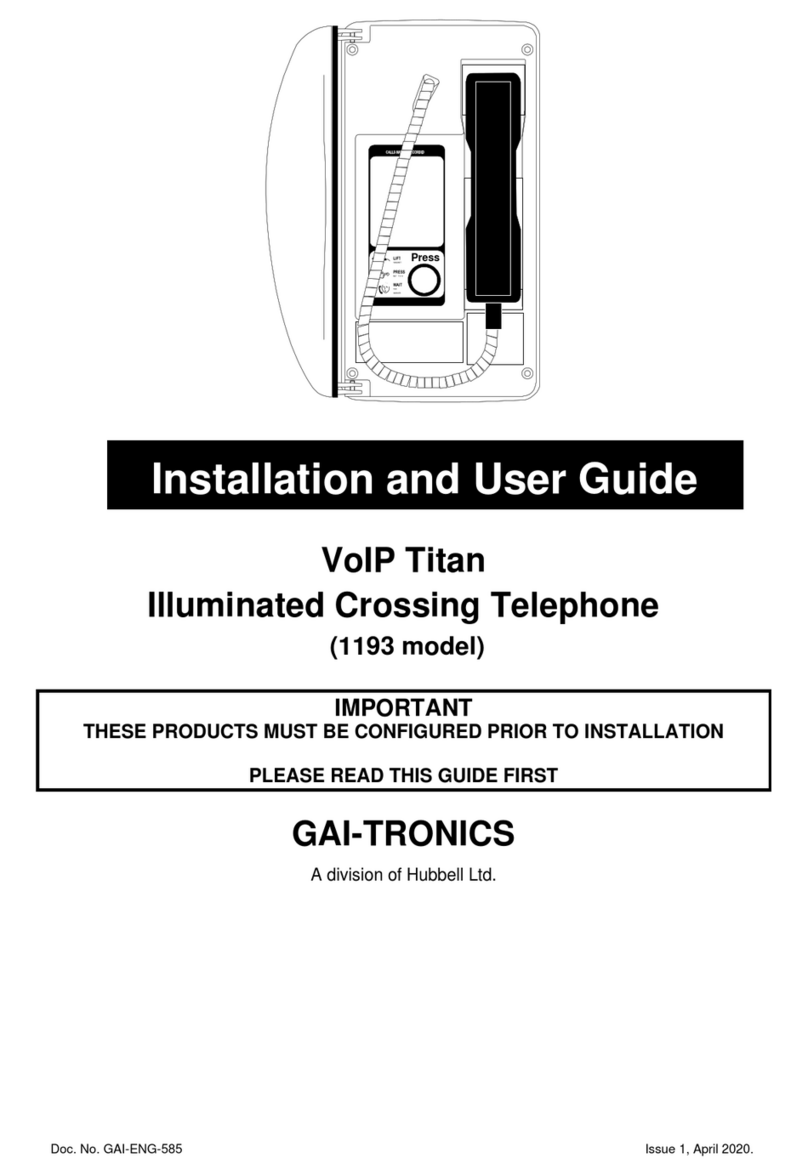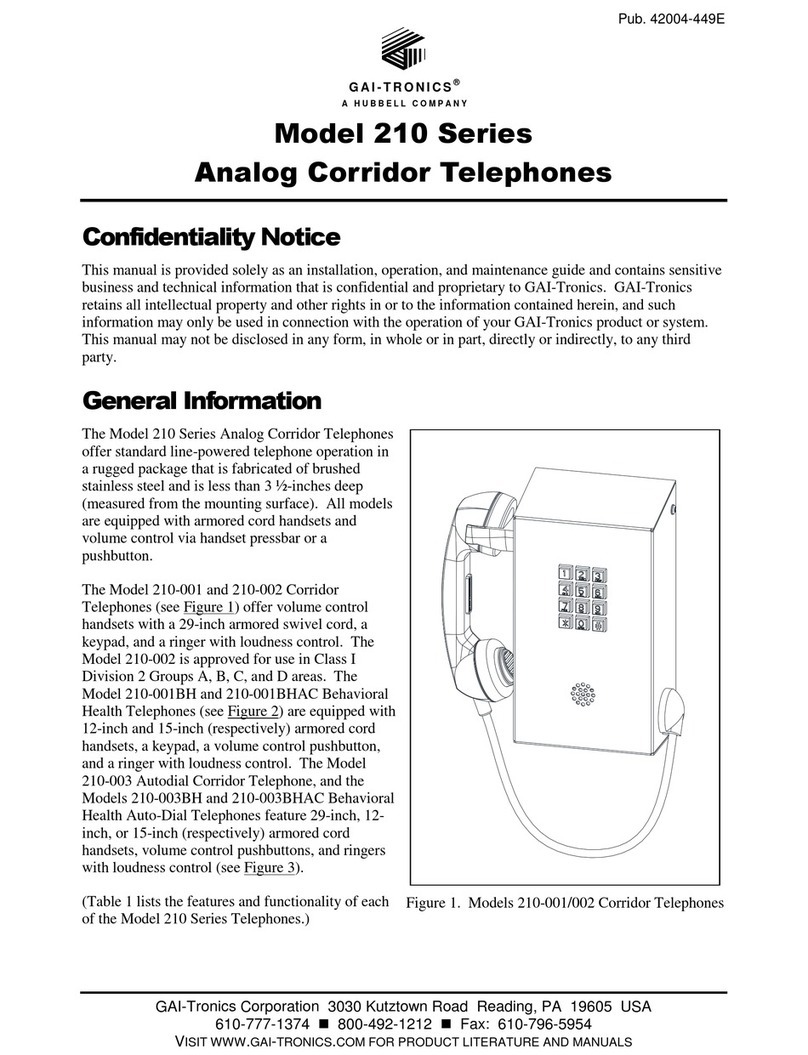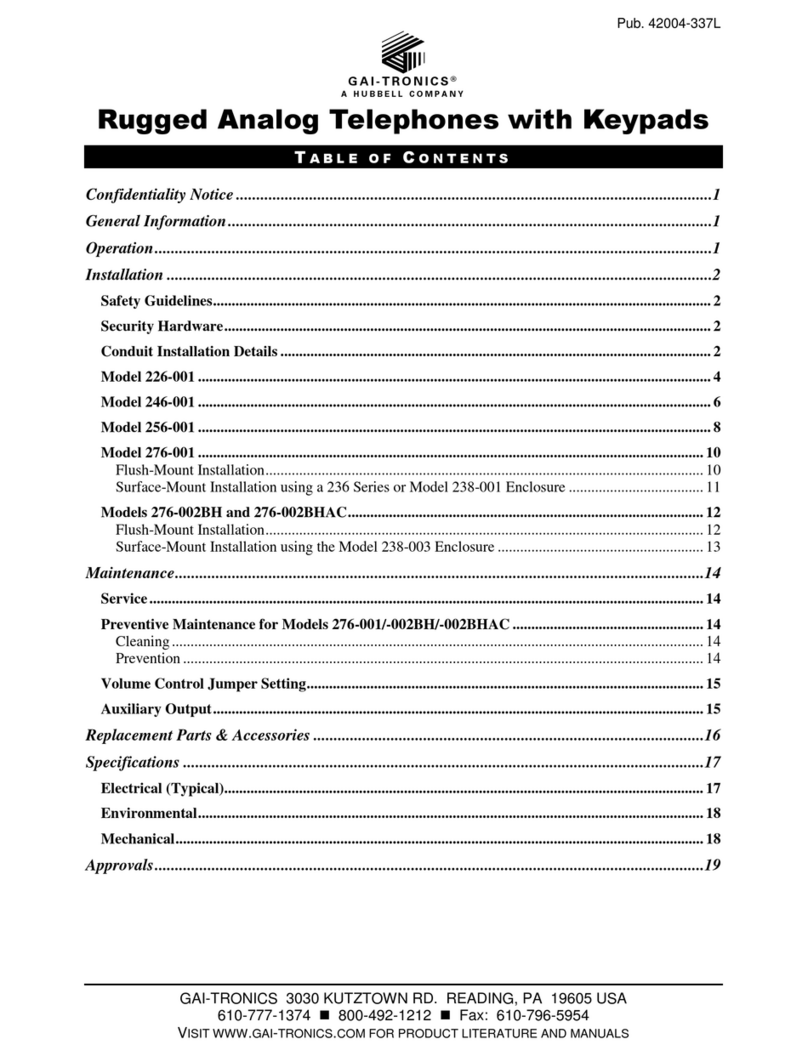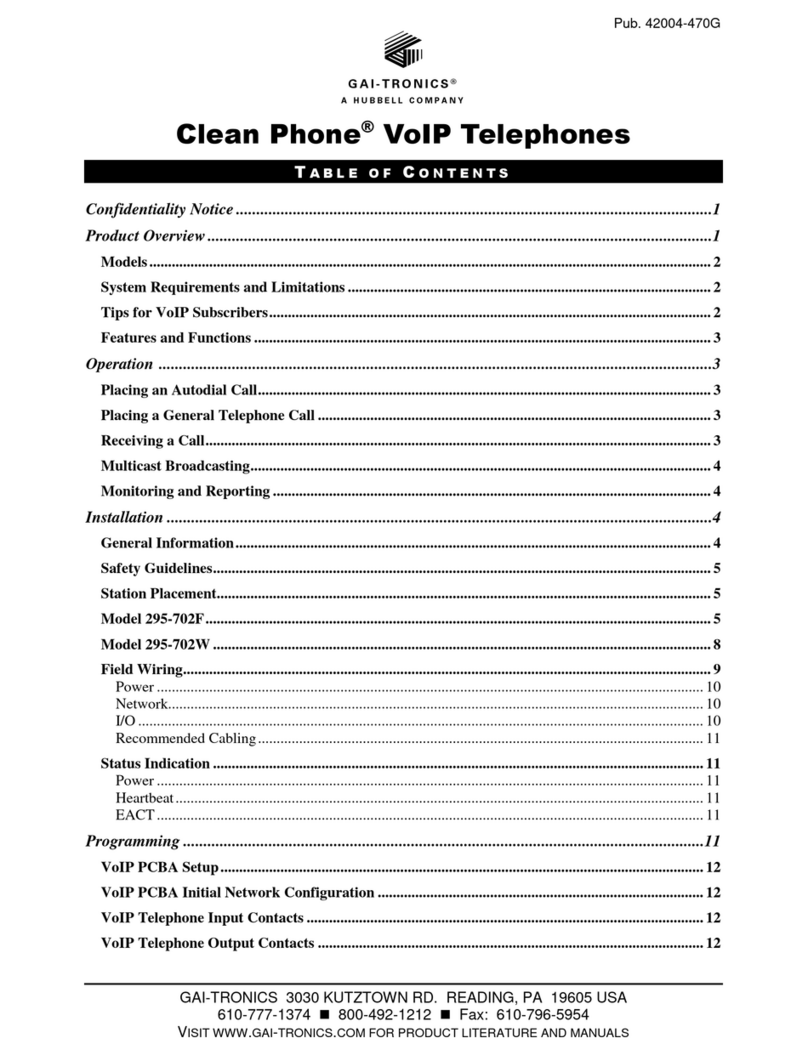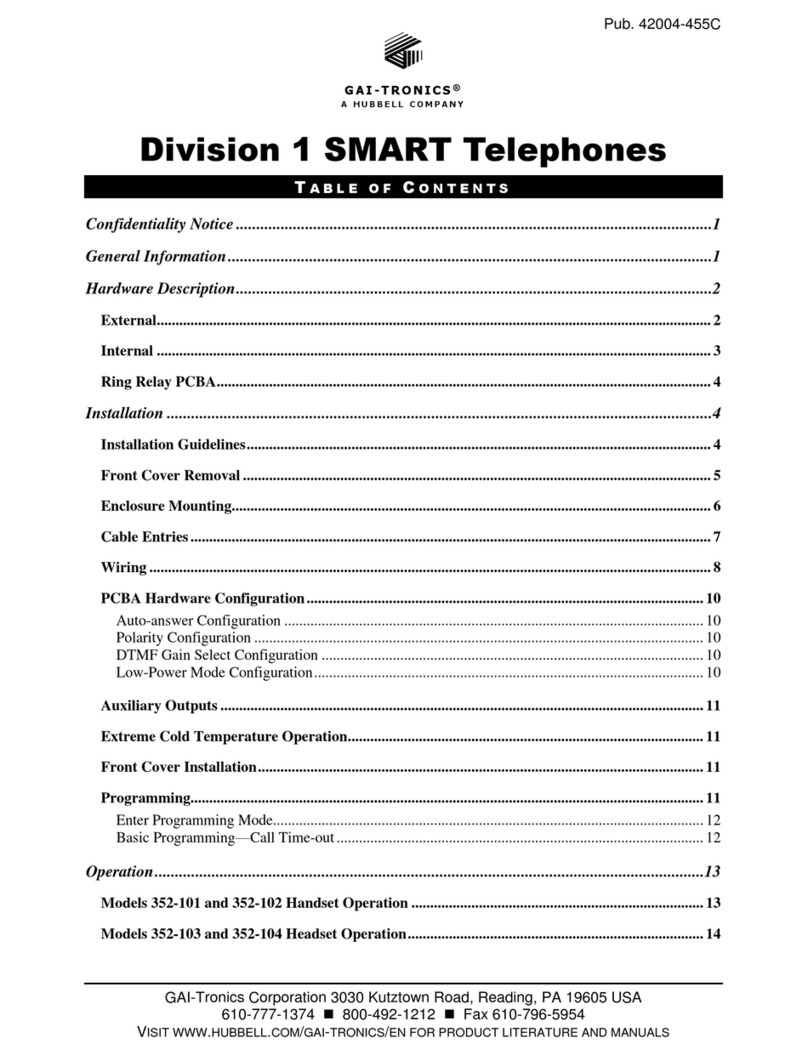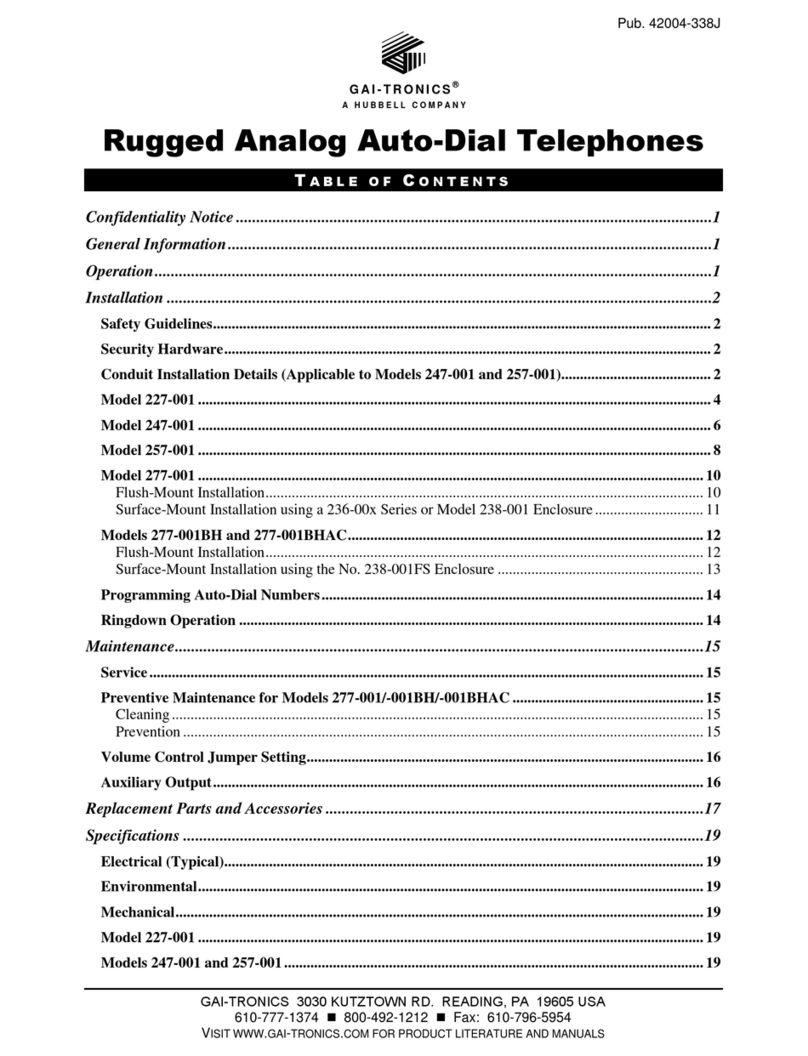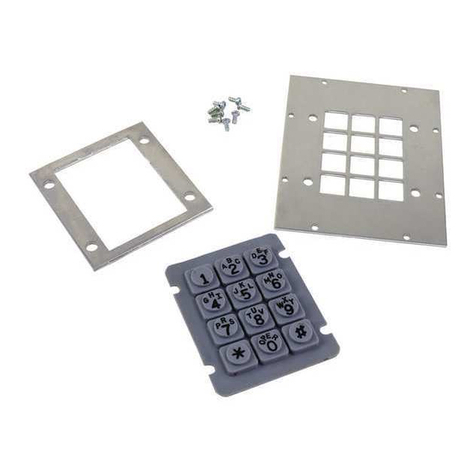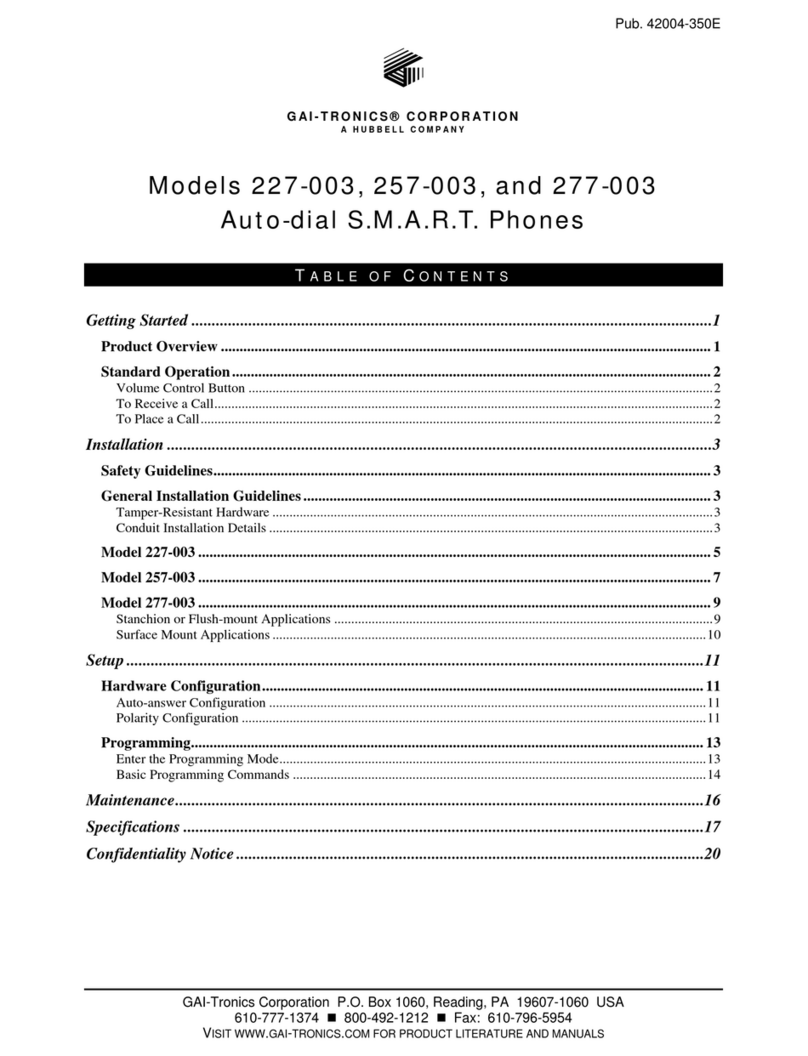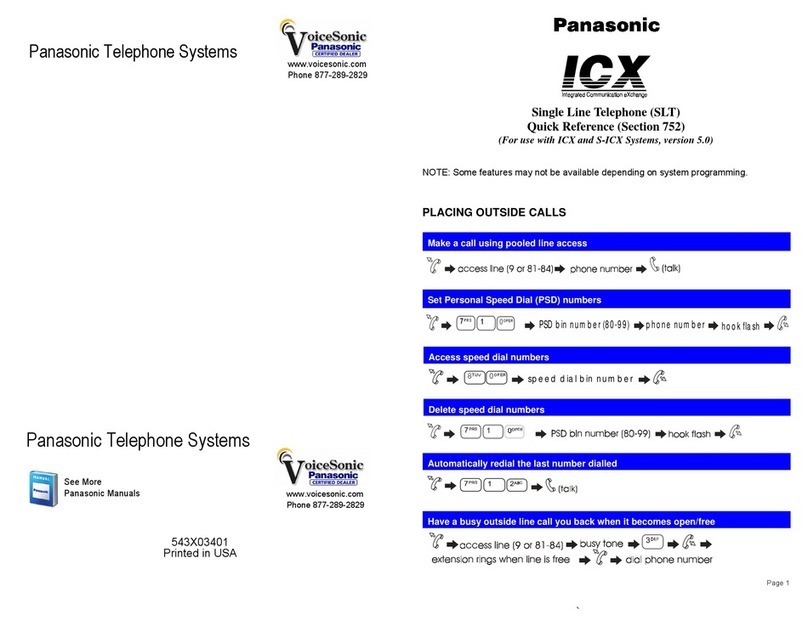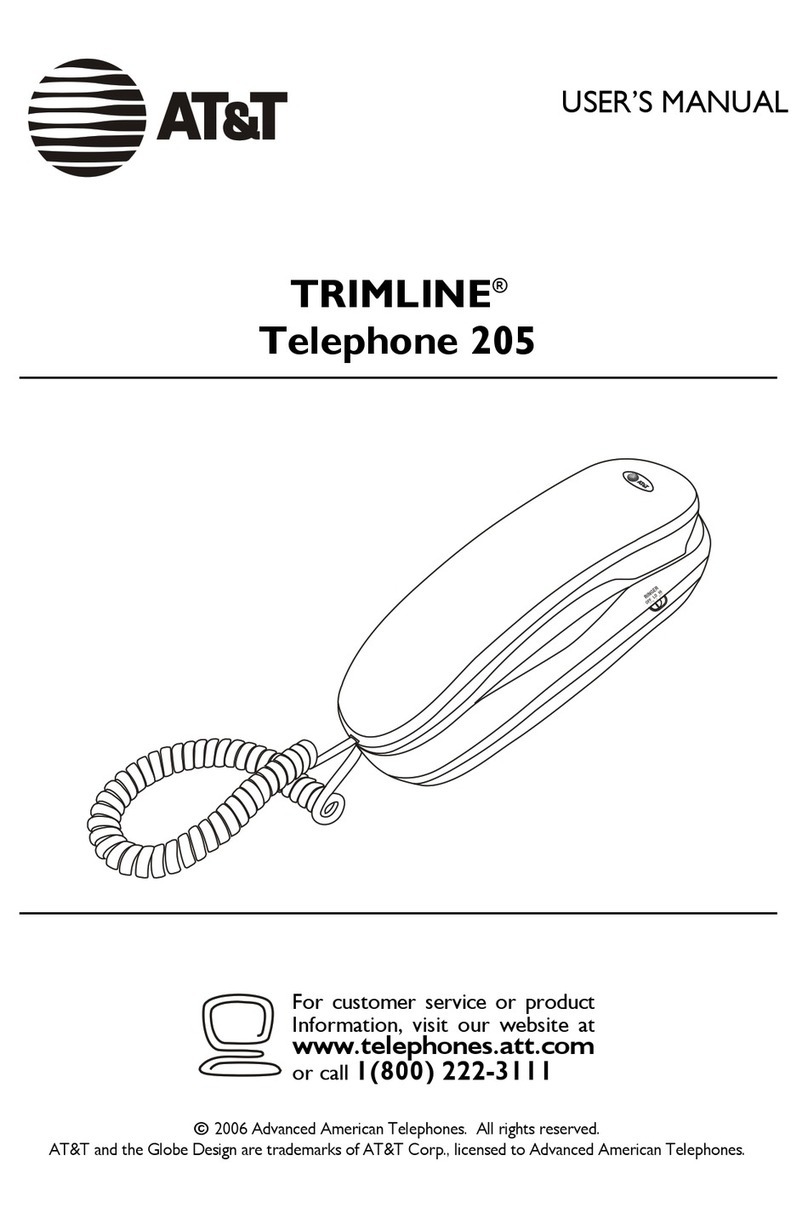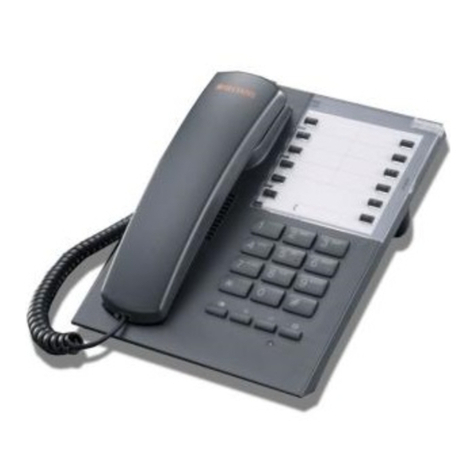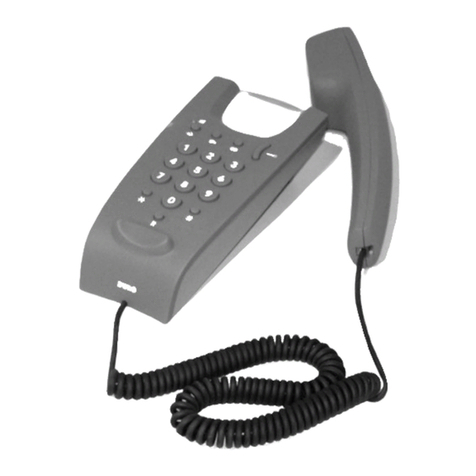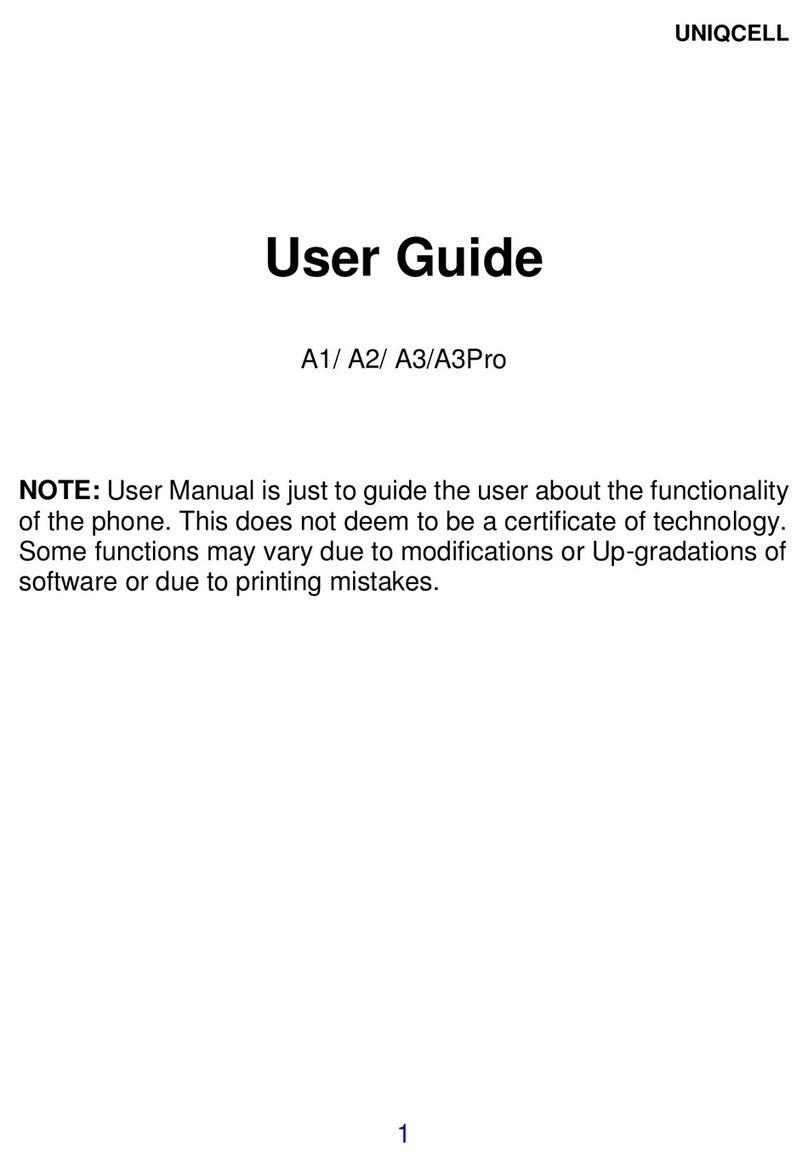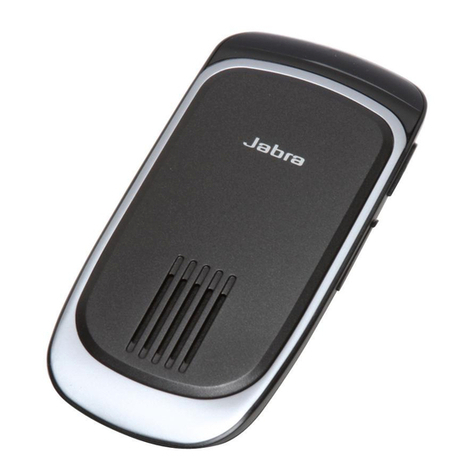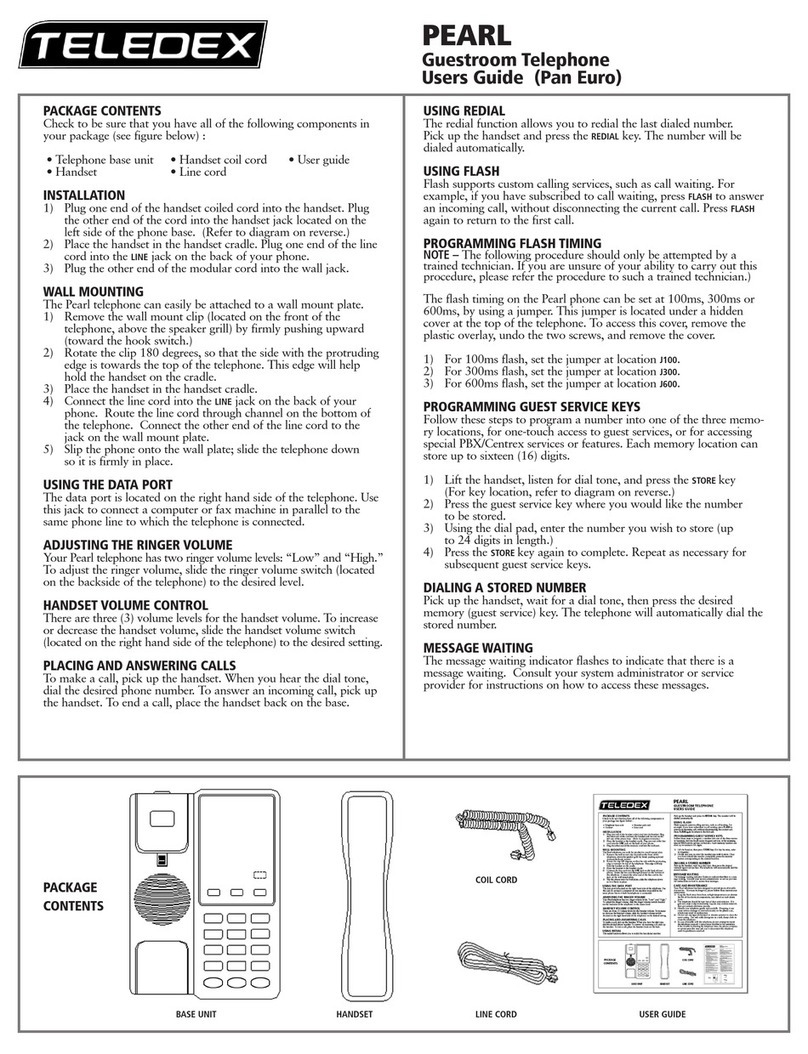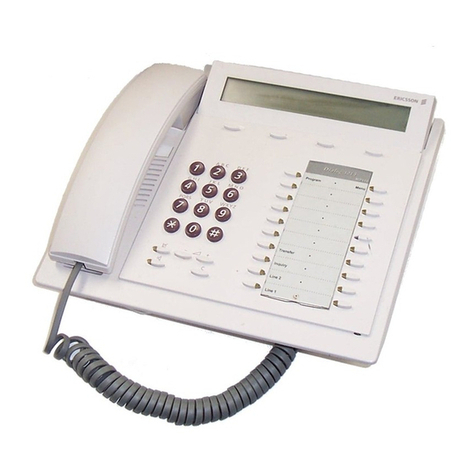
Pub. 42004-472C
GAI-TRONICS 3030 KUTZTOWN RD. READING, PA 19605 USA
610-777-1374 800-492-1212 Fax: 610-796-5954
VISIT WWW.GAI-TRONICS.COM FOR PRODUCT LITERATURE AND MANUALS
G A I - T R O N I C S ®
A H U B B E L L C O M P A N Y
Auto-Dial Telephone Manual
TA B L E O F CO N T E N T S
Confidentiality Notice.....................................................................................................................1
Product Overview............................................................................................................................1
Telephones...............................................................................................................................................1
Telephone Management Application (TMA) .......................................................................................3
Standard Operation.........................................................................................................................3
Receiving a Call.......................................................................................................................................3
Disconnecting a Call ...............................................................................................................................4
Location Identification Code Dialing....................................................................................................4
Installation ......................................................................................................................................4
Safety Guidelines.....................................................................................................................................4
General Installation Guidelines.............................................................................................................5
Security Hardware..................................................................................................................................5
Conduit Installation Details (Surface Mount Applications)................................................................5
Models 393-00xAD and 393AL-00xAD.................................................................................................7
Model 397-00xAD (Stanchion or Flush-Mount Applications) ............................................................9
Model 397-001ADFS (Flush-Mount Applications) ............................................................................12
External Power for -003AD Models....................................................................................................14
GAI-Tronics Strobe Connection..........................................................................................................15
Setup..............................................................................................................................................16
Hardware Configuration......................................................................................................................16
Auto-answer Configuration ................................................................................................................................16
Polarity Configuration ........................................................................................................................................16
DTMF Gain Select Configuration.......................................................................................................................16
Password Enable Configuration..........................................................................................................................17
Command Select Configuration..........................................................................................................................17
Low-Power Mode Configuration........................................................................................................................17
Hardware Settings...............................................................................................................................................17
Auxiliary Outputs .................................................................................................................................18
Extreme Cold Temperature Option....................................................................................................19
Auxiliary Output Control.....................................................................................................................19


